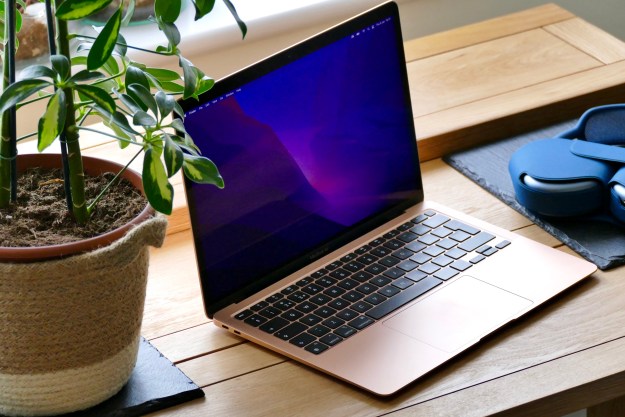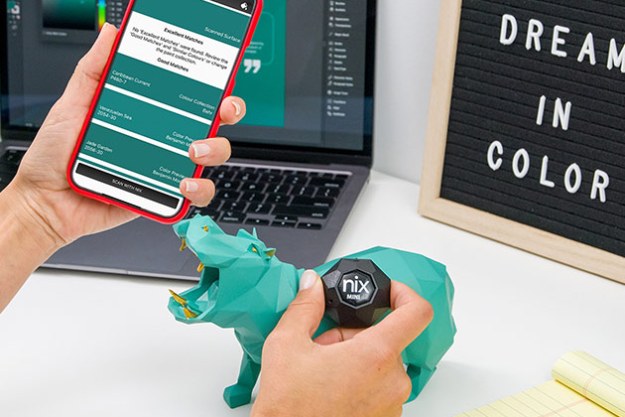We’ve seen all the latest and greatest smartphones at Mobile World Congress 2017, and now we’re going to rank the best ones. It’s always a tough call, but sometimes you just have to be ruthless. We’ve tried all of these phones and even used a few of them regularly during the week in Barcelona, Spain. Here are our picks.
Gold Medal Winner: LG G6
The LG G6 may have a giant 5.7-inch Quad HD screen, but it has the body of a much smaller phone. It looks gorgeous in glass and metal, and the front of the device is almost all screen. The G6 is incredibly comfortable to hold and use one-handed. Although many will underestimate the work and innovation that went into minimizing the top and bottom bezels on the phone, the G6 is a marvel to behold.
Qualcomm’s Snapdragon 821 processor can be found inside, along with 4GB of RAM and 32GB of storage. The specs aren’t necessarily cutting edge, but they more than powerful enough to drive this phone. A 3,300mAh battery, wireless charging (in the U.S.), and Quick Charge 3.0 mean you’ll have long battery life and an easy time juicing it up.
There are two 13-megapixel cameras on the back of the phone, one of which has a wide-angle lens. The front camera also has a wide-angle option for taking group selfies. We’ve been using the cameras around the city, and they’re top notch. LG’s user interface GUI runs on top of Android 7 Nougat, and it looks simple and sleek. It makes the most of the phone’s 2:1 aspect ratio, too, for a clean, symmetrical look.
Silver Medal Winner: Huawei P10
Huawei’s P10 is an attractive fashion-forward phone with fun color choices and two slick cameras from Leica. The Dazzling Blue and Greenery color options were developed with the help of the color experts at Pantone, and they look stunning. We can’t help but wish more phones came with such delightful options.
The 5.1-inch, 1,920 x 1,080-pixel screen looks bright and gorgeous, and Huawei’s own Kirin 960 powers the device, along with 4GB of
The camera is the real highlight in the P10. On the back, there’s a 12-megapixel color sensor and a 20-megapixel monochrome sensor. The color camera has a f/2.2 aperture and optical image stabilization. Huawei improved the software in the camera app for bokeh controls and added a new Portrait mode, which specifically targets faces in your photos. The Portrait mode brings people out of the background and highlights the person’s face over all else. You have lots of control over every aspect of the photo in editing afterward. We’ve never taken better portraits than we have with the P10.
We don’t know if the P10 will ever come to the U.S., but we certainly hope it does. In the meantime, it’s coming to Europe and other markets for 650 euros.
Bronze Medal Winner: Sony Xperia XZ Premium
Sony phones may not be popular in the U.S., but they are big in Europe. Sony’s 5.5-inch XZ Premium has a lovely 4K HDR screen and a Qualcomm Snapdragon 835 processor. It comes in chrome and black, and its made all of Gorilla Glass 5. Sadly, that means it’s a fingerprint magnet. However, we just love the shiny chrome look.
Sony took
The XZ Premium comes with 4GB of
The front camera has 13 megapixels and a 22mm wide-angle lens. Meanwhile, the rear camera is packed with 19 megapixels and features 5-axis image stabilization. It produced great results in our brief hands-on time.
The best of the rest
Fourth Place Winner: Moto G5 Plus
Lenovo continues to capitalize on the success of the G series budget phones. The plastic body is curvy, simple, and comfortable to hold. It’s likely to be one of the best budget phones you can buy, much like all other Moto G phones before it.
Its new Moto G5 Plus boasts a 5.2-inch Full HD screen shielded by Gorilla Glass 3. It’s a sharp screen for the budget market, and it has a decent processor inside as well. The Qualcomm 2GHz octa-core Snapdragon 625 and up to 4GB of
The battery is the same size as last year’s model at 3,000mAh and supports Lenovo’s proprietary TurboPower fast-charging technology. A fingerprint sensor is embedded in a raised nub on the front of the Moto G5 Plus, and it works with
The G5 Plus retails for $230 (with 2GB of
Fifth Place Winner: Nokia 6
Nokia is back with
The extra metal protection along the sides of the phone make it feel very durable, and the Nokia 6 truly does feel like a high-end phone, both hardware- and software-wise.
The Nokia 6 is one of the few phones that’s running the same pure version of
The Nokia 6 is powered by the Qualcomm Snapdragon 430 and 4GB of
There are five colors to choose from, including a glossy black, a matte black, blue, silver, and copper. The copper model was neat to look at, but the glossy back was a real fingerprint magnet.
The Nokia 6 will cost 230 euros ($242), but it’s only in Europe and Asia for now. We haven’t heard about a U.S. launch yet.
Sixth Place Winner: BlackBerry KeyOne
This one is for all you Blackberry fans! QWERTY is back in the house on the KeyOne. The phone has a 4.5-inch screen with a 1,620 x 1,080-pixel resolution that sits atop the traditional BlackBerry keyboard. The display looks vibrant and colorful, and the keyboard’s capacitive gesture capabilities mean there are fewer opportunities to leave fingerprints smudges all over.
It’s powered by Qualcomm’s Snapdragon 625 and 3GB of
The 3,505mAh battery juices up with Qualcomm’s Quick Charge 3.0, which BlackBerry claims can get you to 50 percent in 36 minutes. The front camera packs 8 megapixels, and the rear camera has 12 megapixels (with large 1.55µm pixels).
The BlackBerry KeyOne will cost $550, and it will be available unlocked and from U.S. carriers in May.
Article originally published on 03-02-2017 by Malarie Gokey. Updated on 04-25-2017 by Adam Ismail: Updated pricing and availability information for some devices.
Editors' Recommendations
- It’s finally happening — OnePlus will release a folding phone this year
- What to expect from smartphone makers now that MWC 2020 is canceled
- T-Mobile wants to give you a free smartphone when you add a line



